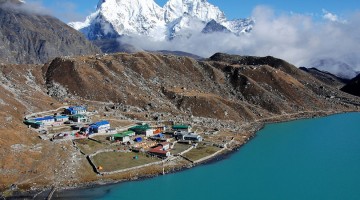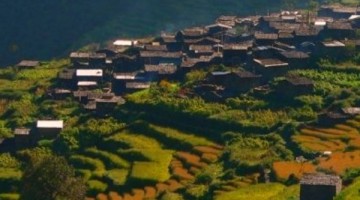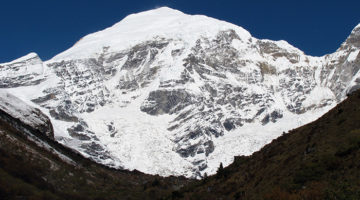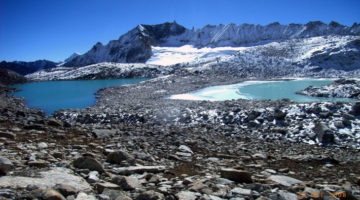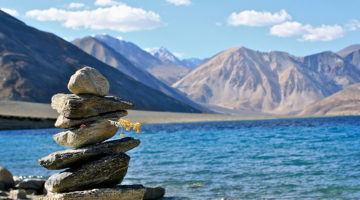At a glance
Trekking: Kanchenjunga trekking
Grade: Moderate to exhausting
Best season: March, April, May, September, October, November
Trekking Significance: Mt. Kanchenjunga (8586m) Himalayan range, Kanchenjunga conservation area, Sherpa village and their unique culture.
Description
Kangchenjunga Base Camp Trek is geographically and culturally superb. Fly from Kathmandu to Biratnagar in the lowlands and up to Suketar. The trail drops, through terraced farmlands and forests to the village of Mitlung on the Tamor River and then follows the river to the picturesque cluster-village of Chirwa.
Sekathum is a Tibetan village at the confluence of the Tamor and Ghunsa Rivers. The trail branches up the Ghunsa Khola, through oak, rhododendron and bamboo forests. Good views appear from high ground. Amjilosa, with its Cardamom fields, is a wealthy village. A short upward day through forest and scattered pastures leads to Gyabla.
The Kachenjunga base camp trekking trail to Ghunsa passes through larch forests as the valley widens. This is the largest village in the region. Steep forested slopes form the impressive valley sides with snow peaks above. There is a hydro electric plant. On the rest day, visit the Gompa or climb high for aerial views of the village.
The Kambachenjunga trek Nepal climbs through alpine forests, changing to scrub vegetation as the altitude rises. Cross scree slopes opposite the terminal moraine of the Jannu Glacier beneath the impressive peak before Kambachen. The landscape becomes increasingly desolate in a valley forged by glacial ice. Ice laden peaks tower overhead. The last kharka at Lhonak is set above the Kangchenjunga Glacier, opposite the spectacular Wedge Peak.
From here it is a two hour walk above the glacier to the view point at Pang Pema. Here the glacier makes a sharp turn to the south and rises to reveal the awesome bulk of Kangchenjunga; the crowning glory in a vast and spectacular setting.
The easier return route follows the up-path offering different perspectives and time to consolidate its grandeur. We offer both tea house and camping trekking to Kangchenjunga trek. Our trekking package covers transport, porters, meals, sturdy tent accommodation, and safe drinking water. March to May and September to November are the best months to your Kanchenjunga trekking.






